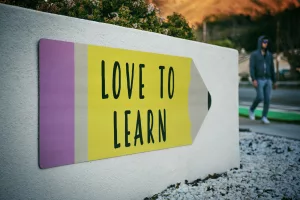Problem-solving skills are essential in both personal and professional settings. If you find yourself consistently tackling challenges with ease and coming up with effective solutions, you are likely enhancing your problem-solving skills. Look out for signs such as being able to analyze situations objectively, thinking critically, and creatively brainstorming solutions. One way to know if you’re enhancing your problem-solving skills is by seeking feedback from others. Engage with colleagues, mentors, or friends to get their perspective on how you handle problems. Constructive feedback can provide valuable insights into areas you excel in and areas that may need improvement.
Understanding Problem-Solving Skills
Before diving deeper, it’s important to understand what problem-solving skills entail. At their core, these skills involve identifying a problem, devising potential solutions, and implementing the best course of action. This process requires a mix of analytical thinking, creativity, and decision-making abilities.
Key Components of Problem-Solving:
- Analytical Thinking: Breaking down complex problems into smaller, manageable parts. For example, if you’re faced with a budget shortfall, analytical thinking will help you dissect the budget line by line to identify where cuts can be made or where additional revenue can be generated.
- Creativity: Thinking outside the box to generate innovative solutions. Consider the case of a team brainstorming session where the goal is to enhance customer satisfaction. Creative solutions might involve implementing a new loyalty program or using technology to personalize customer interactions.
- Decision-Making: Assessing options and choosing the most effective solution. Imagine you’re managing a project with a looming deadline; effective decision-making enables you to prioritize tasks and allocate resources efficiently.
- Communication: Clearly articulating problems and solutions to others. This involves not just speaking clearly but also ensuring your message is understood, which might include visual aids or written summaries.
- Collaboration: Working effectively with others to enhance problem-solving outcomes. For instance, when launching a new product, collaborating with marketing, design, and production teams ensures a holistic approach.
Seeking Feedback
Feedback is a cornerstone of personal and professional growth. To truly enhance your problem-solving skills, constructive feedback from a diverse range of people can be invaluable.
How to Seek Effective Feedback:
- Choose the Right People: Select individuals who understand your work and can provide honest, unbiased feedback. This could include mentors, peers, or even clients. A mentor with experience in your field can offer insights you might not have considered.
- Be Open to Criticism: Approach feedback with an open mind. Recognize that criticism is an opportunity to learn and improve. It’s not always easy to hear, but it’s a crucial part of growth.
- Ask Specific Questions: Instead of vague inquiries, ask pointed questions about your problem-solving approach. For instance, “How did you perceive my handling of the recent project issue?” This specificity helps others provide targeted advice.
- Reflect and Act: After receiving feedback, take time to reflect on it and plan actionable steps to improve. Create a personal development plan that incorporates the feedback and tracks your progress over time.
Increasing Efficiency and Effectiveness
Another indicator of improving problem-solving skills is an increase in efficiency and effectiveness when solving problems. As you develop your skills, you may notice that you are able to identify issues quicker, prioritize tasks effectively, and implement solutions in a timely manner.
Tips to Enhance Efficiency:
- Adopt a Systematic Approach: Use frameworks like the PDCA (Plan-Do-Check-Act) cycle to structure your problem-solving process. This iterative method allows for continuous improvement and adaptability to changes.
- Prioritize Tasks: Utilize tools like the Eisenhower Box to categorize tasks based on urgency and importance, ensuring that you’re focusing on what truly matters. For instance, handling a client’s immediate request takes precedence over a routine report.
- Leverage Technology: Utilize project management software such as Asana or Trello to track progress and collaborate with team members efficiently. These tools offer visibility into project timelines and responsibilities, helping prevent bottlenecks.
Embracing Challenges
Individuals who actively seek out challenges and view them as opportunities for growth are likely enhancing their problem-solving skills. By embracing challenges, you are pushing yourself out of your comfort zone and expanding your problem-solving capabilities.
Strategies to Embrace Challenges:
- Set Stretch Goals: Aim for goals slightly outside your current capabilities to push your boundaries. For example, if you’re comfortable managing small teams, volunteer to lead a larger, more diverse group.
- Cultivate a Growth Mindset: Believe that your abilities can be developed through dedication and hard work. This mindset fosters resilience when faced with challenges. Reading Carol Dweck’s “Mindset: The New Psychology of Success” can offer valuable insights into fostering this mindset.
- Reflect on Past Challenges: Analyze previous difficult situations to learn what you did well and what you could improve upon. Keeping a challenge journal where you document your learnings can be a powerful tool for growth.
Continuous Learning and Development
Those who are dedicated to continuous learning and development are often improving their problem-solving skills. Engaging in activities such as reading books, attending workshops, and seeking out new experiences can broaden your problem-solving toolkit and enhance your ability to overcome obstacles.
Continuous Learning Activities:
- Attend Workshops and Seminars: Participate in events that focus on problem-solving techniques and innovation. Conferences such as the Global Leadership Summit offer a plethora of insights from industry leaders.
- Read Widely: Books like “Thinking, Fast and Slow” by Daniel Kahneman offer insights into decision-making and problem-solving. Exploring diverse genres, from biographies to science fiction, can also spark creativity.
- Online Courses: Platforms like Coursera or Udemy offer courses specifically designed to enhance critical thinking and problem-solving skills. Courses such as “Critical Thinking and Problem Solving” by the University of California can be extremely beneficial.
- Networking and Knowledge Exchange: Join professional groups or online forums where you can exchange ideas and solutions with peers. Engaging in discussions on platforms like LinkedIn can expose you to new perspectives.
Collaboration and Communication
Effective problem solving often involves collaboration and communication with others. If you find yourself engaging in productive discussions, seeking diverse perspectives, and working well in team settings, you are likely honing your problem-solving skills through interaction with others.
Enhancing Collaboration:
- Diverse Teams: Build teams with varied skill sets and backgrounds to harness different perspectives. A team with engineers, marketers, and designers will naturally approach a problem from different angles, enriching the solution.
- Active Listening: Practice active listening to fully understand others’ viewpoints before responding. This involves acknowledging others’ contributions and asking clarifying questions to ensure understanding.
- Facilitated Brainstorming Sessions: Use techniques like the Six Thinking Hats to explore problems from multiple angles and generate comprehensive solutions. This method encourages parallel thinking and reduces conflict within teams.
Real-World Applications
To bring these concepts to life, consider applying them in real-world scenarios. Here’s a breakdown of how these skills might play out in various settings:
In the Workplace:
- Project Management: Improve project delivery by implementing structured problem-solving approaches like Agile methodology. Agile encourages iterative development and regular feedback, which enhances team adaptability.
- Product Development: Use design thinking to innovate and create user-centered products. This approach involves empathizing with users, defining their needs, ideating solutions, and prototyping and testing them.
In Personal Life:
- Financial Planning: Enhance your financial acumen by applying problem-solving skills to budgeting and investment decisions. Tools like Mint or YNAB can help you visualize your financial situation and make informed decisions.
- Relationship Building: Resolve conflicts effectively by employing communication and collaboration skills. Techniques such as active listening and empathetic communication can strengthen personal relationships.
Common Mistakes and How to Avoid Them
Even seasoned problem solvers can make mistakes. Recognizing these pitfalls and learning how to avoid them can drastically improve your effectiveness.
Common Mistakes:
- Rushing to Solutions: Avoid jumping to conclusions without fully understanding the problem. Take time to gather all necessary information and consider multiple perspectives before deciding.
- Overcomplicating Solutions: Simplicity often leads to the best outcomes; don’t overthink the problem. A simple checklist or flowchart can sometimes be the most effective tool for solving a complex issue.
- Ignoring Feedback: Dismissing others’ input can lead to blind spots in your problem-solving approach. Ensure you actively solicit and incorporate feedback to refine your solutions.
Measuring Your Progress
Finally, it’s crucial to track your progress in developing problem-solving skills. This will help you understand what strategies work best for you and where you might need further improvement.
Methods to Measure Progress:
- Self-Assessment: Regularly evaluate your problem-solving abilities through self-reflection and journaling. Reflect on your successes and where you could have done better.
- Peer Review: Engage in peer reviews where colleagues assess your problem-solving contributions. This collaborative assessment can highlight strengths you might overlook and areas for improvement.
- Performance Metrics: Use key performance indicators (KPIs) to quantify improvements in areas like decision-making efficiency and solution effectiveness. Metrics might include the time taken to resolve issues or the success rate of implemented solutions.
By continuously enhancing your problem-solving skills, you not only become more adept at navigating challenges but also empower yourself to create impactful solutions in both personal and professional realms. As you build these skills, remember that the journey is ongoing, and each new challenge is an opportunity to learn and grow.



